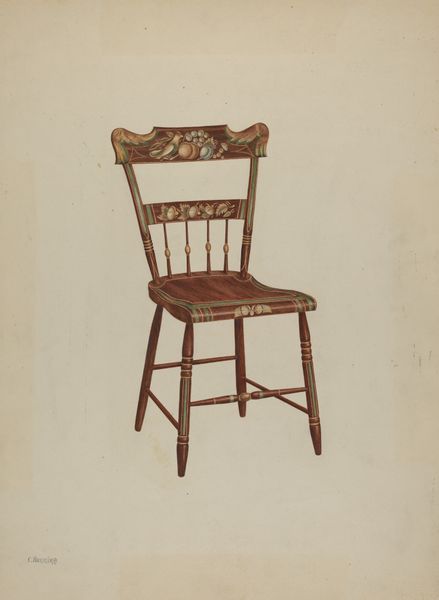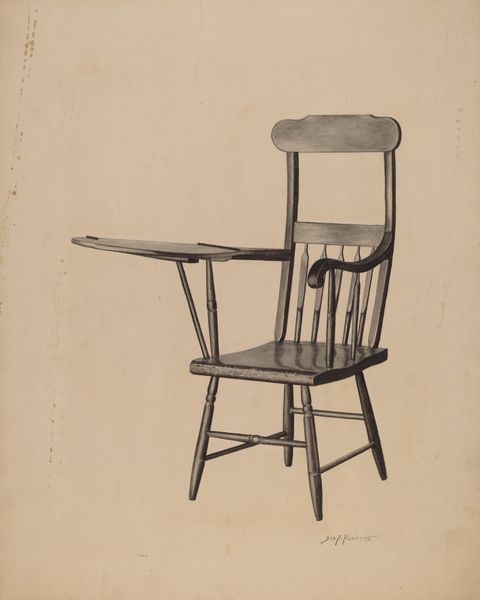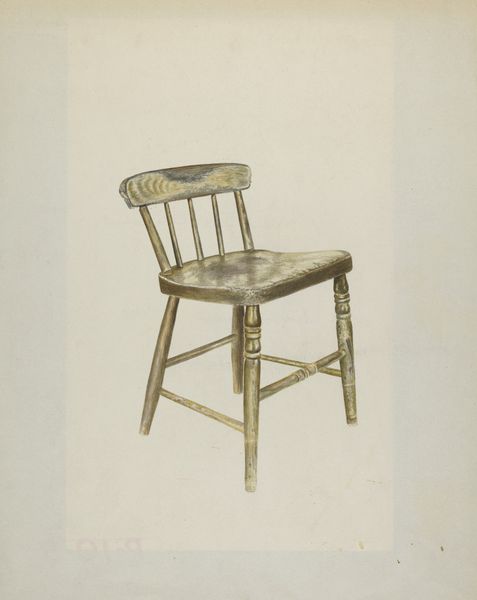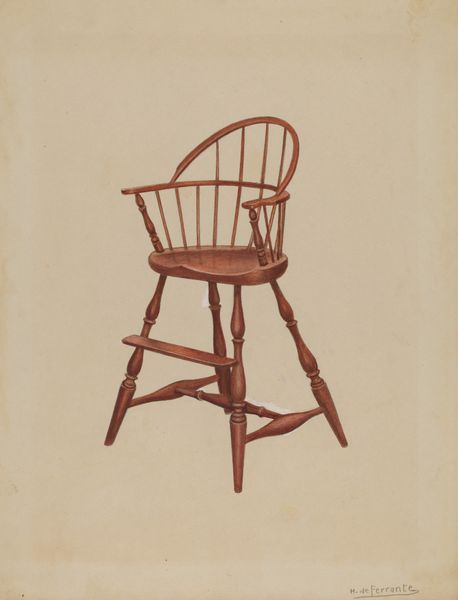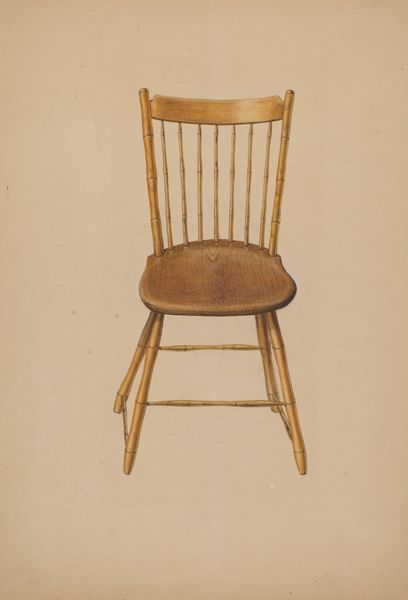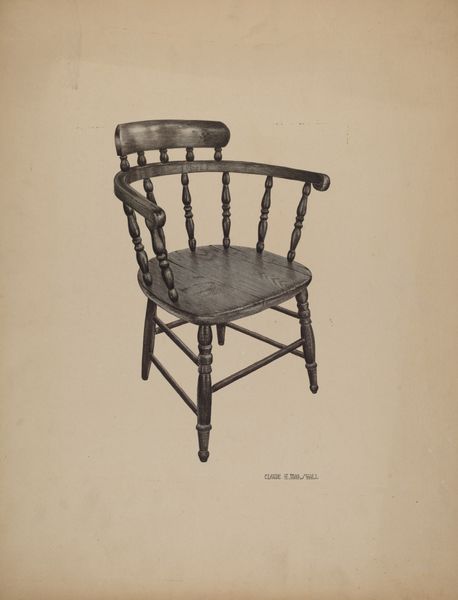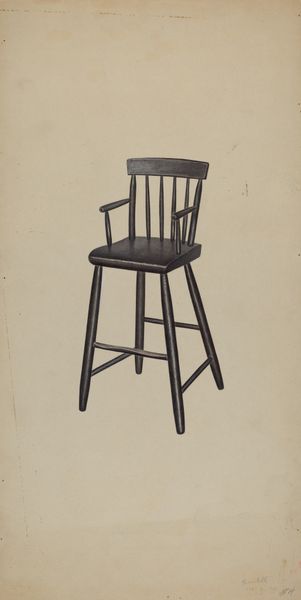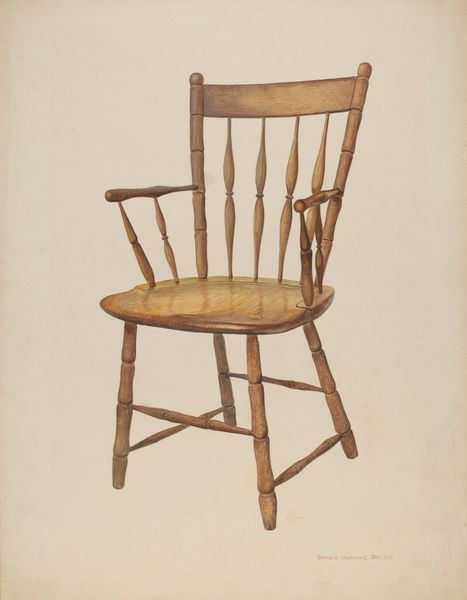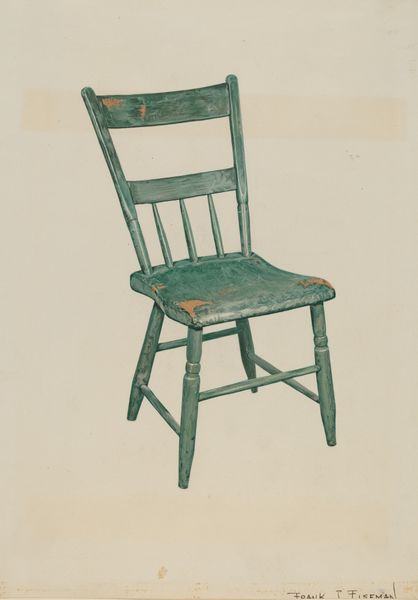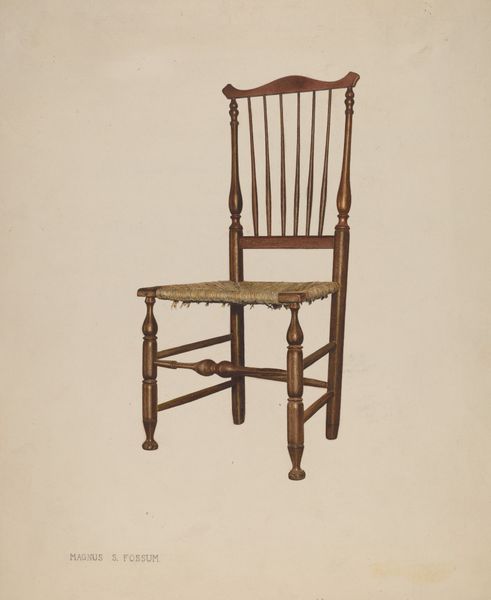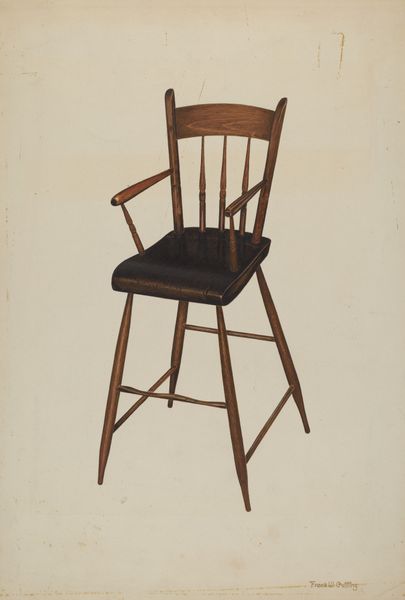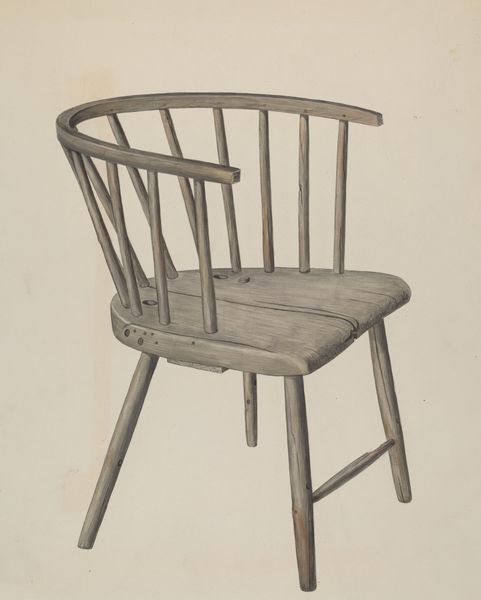
drawing, paper
#
drawing
#
paper
#
watercolor
Dimensions: overall: 25.9 x 22.7 cm (10 3/16 x 8 15/16 in.)
Copyright: National Gallery of Art: CC0 1.0
Curator: Here we have John W. Kelleher's watercolor and pencil drawing from around 1937, "Shaker Dining Chair." What's your initial read? Editor: Austere. Utilitarian. There's a starkness in its lines that makes me think about plain living, about essential objects. A solitary artifact depicted in an empty space, quite stoic. Curator: Exactly. And that stripped-down quality really embodies the Shaker aesthetic, which was, of course, deeply connected to their social and religious values of simplicity and utility. Editor: Right. Visually, the dark wood and minimal ornamentation resonate with a certain rejection of worldly excess. I see echoes of early American pragmatism in its functional design. It's as though the chair embodies a moral principle. Curator: The very absence of flourish is a statement, a purposeful negation of ornamentation often associated with hierarchy and elitism. The Shakers, in their communal societies, aimed for equality. So, every object reflected this collective ideal. Editor: It makes me consider the gendered dynamics as well, in a fascinating twist: furniture-making as a traditional male domain adopted within a sect often noted for strong female leadership, creating objects meant for a communal space, not individual ownership. Curator: Indeed. Consider how these objects occupied spaces during meals, central to community bonding. Each chair placed with a specific purpose in mind. Beyond their functionality, they subtly communicated the Shaker belief system, subtly influencing social and spiritual growth. Editor: Thinking about visual culture, the repeated form of these chairs evokes stability, endurance. This repetition isn't merely functional; it’s about shared values solidified through everyday objects. Curator: Precisely. What starts as simple craftsmanship becomes a powerful enactment of social unity and egalitarian values, visualized on the canvas of community life, represented here in this lone example. Editor: Ultimately, seeing this drawing opens up fascinating considerations beyond a chair: how objects become statements, reflections of embedded values shaping lived experiences and collective identity. Thank you! Curator: A beautiful exploration. Thank you, too.
Comments
No comments
Be the first to comment and join the conversation on the ultimate creative platform.
